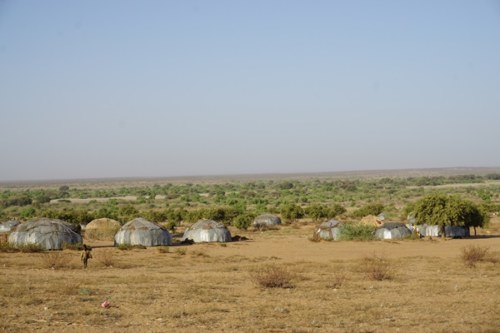
A Dasenach village. Photo: Rosie Bryson
The students visited a village in Ileret and got to know more about the culture of the local Dasenach people. The Dasenach are a pastoralist community living in Marsabit County within the Turkana region. One of the things the students learned was the division of labour within the Dasenach community. The women build the houses, which are dome-shaped, using malleable sticks, rope and iron sheets. The iron sheets are used instead of grass or dry reeds to prevent leakage from rain water. The women also do the household chores like cooking and fetching water for domestic use. On the other hand, the men herd the livestock sometimes spending periods of time away from their homesteads as they look for pasture and water.
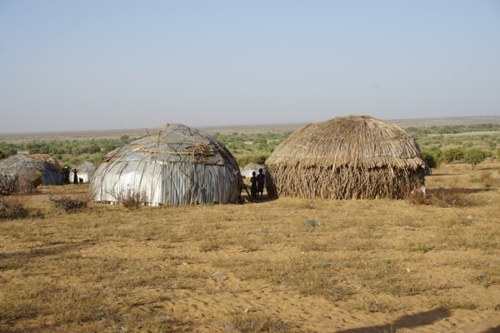
Dasenach houses. Photo: Rosie Bryson
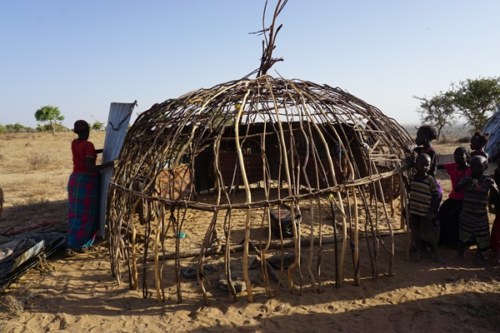
A Dasenach woman building her house. Photo: Rosie Bryson
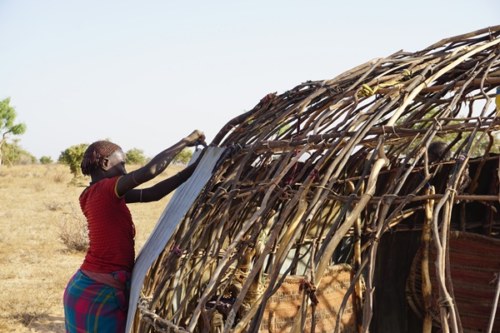
Dasenach woman tying an iron sheet to the frames. Photo: Rosie Bryson
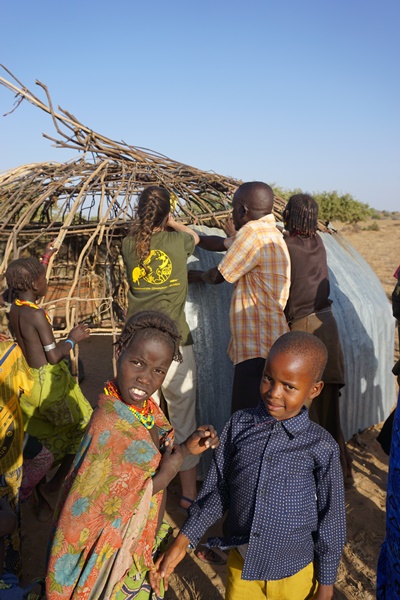
Lydia helping to make the iron sheet roof. Photo: Rosie Bryson
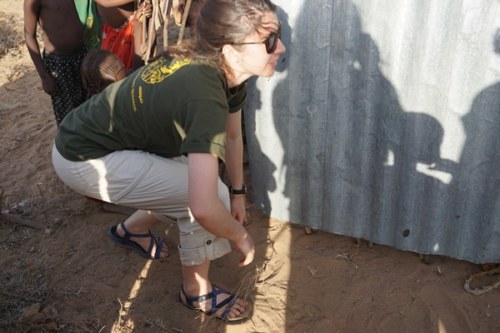
Lydia posing next to her handiwork. Photo: Rosie Bryson
The students were hosted in a Dasenach house and saw how they use their space. A house is called “Bil” in Dasenach. The house is not partitioned. It serves as a kitchen, a dining area, a bedroom, a “lounge” for hosting guests as well as a storage unit. Laid on the floor is a carpet. This is where the family or visitors sit when they want to eat or talk. The students were hosted here. By night, it transforms into a sleeping area. Younger children sleep with the parents and the older children sleep in a different Bil. The animals sleep in an enclosure within the homestead. The enclosure is made from dry, thorny thickets. The kitchen consists of a hearth with three stones where food is cooked and firewood is used as fuel. Next to the hearth is a shelf where the utensils are kept. Water held in plastic containers and food are stored in the house as well.
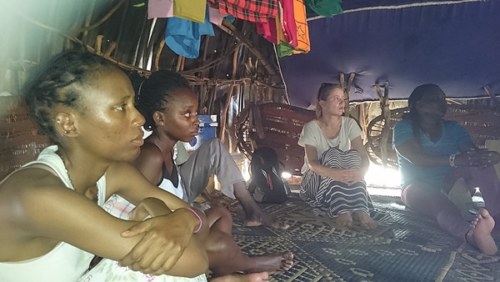
Students sitting in a Dasenach house. Photo: Esther Kadaga
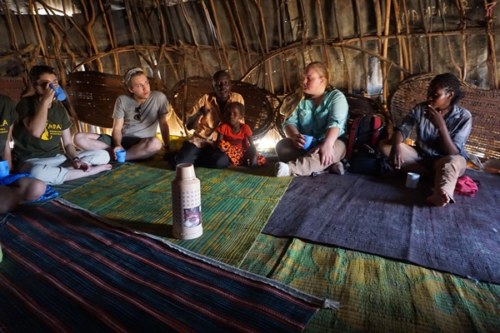
Students were served with tea. Photo: Rosie Bryson
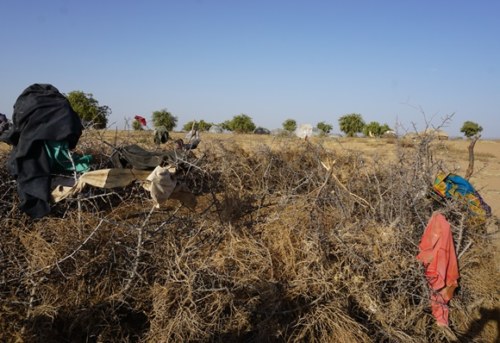
Animal enclosure. Photo: Rosie Bryson
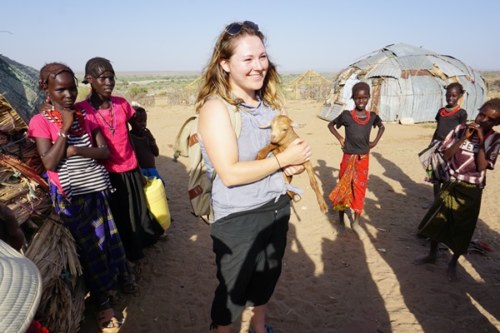
Rosie holding a baby goat
The traditional houses have cultural value to the Dasenach people. They have more significance than modern housing. A Dasenach man who has put up only modern housing in his homestead is sometimes reprimanded. Therefore, in most cases both the traditional and modern features can be found in a homestead. This is a way of following cultural norms but still adopting change. Additionally, since the Dasenach are a nomadic-pastoralist community, the traditional houses are easier to disassemble when they want to migrate. Modern structures are block-shaped and are built from stone blocks, cement and sand. It is not economically feasible to bring down such structures when you have to move away in search of pasture and water.
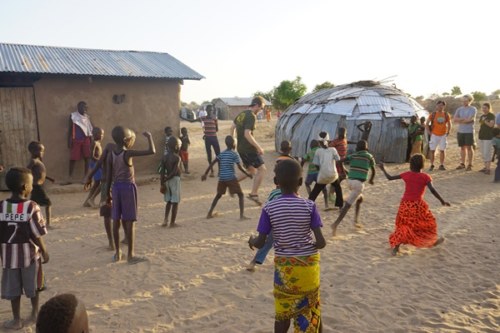
Nick playing with Dasenach children. Photo: Rosie Bryson
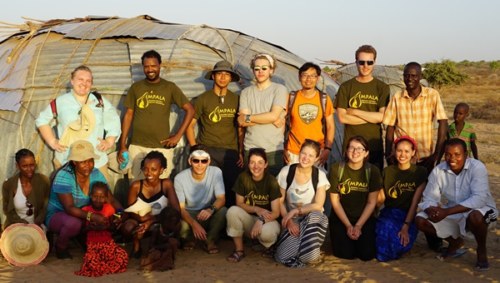
Photo: Rosie Bryson
Palaeontology Module Begins!
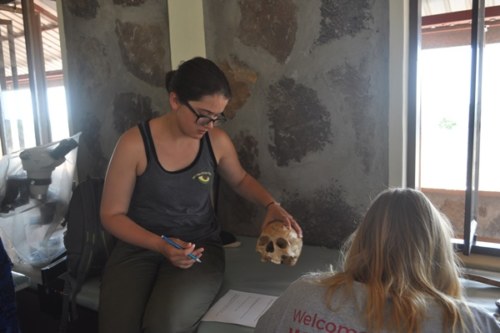
Gil analysing a human cranium in the Palaeontology lab. Photo: Esther Kadaga
The Vertebrate Palaeontology module has begun and Prof. Bill Sanders is the instructor. The students have been learning how to identify different species by analysing bone morphology. Vertebrate palaeontologists identify structural traits on modern and fossil bones in order to distinguish different species from each other.
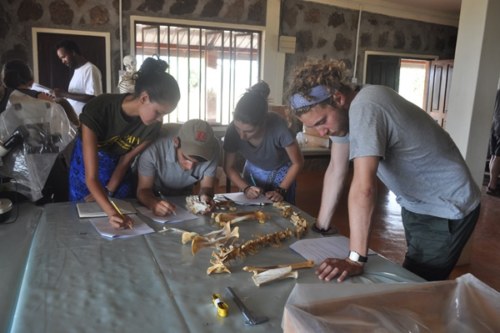
Students learning about bone morphology. Photo: Esther Kadaga
The students started off with plotting a geological timeline of the evolution of the earth’s life forms. The earth is 4.6 billion years old and the first appearance of hominins can be traced back to about 6 million years ago. And modern humans appear at about 200, 000 years ago, our existence represents a very small fraction in the ocean of geologic time! The whole timeline was represented by 4.6m of toilet sheets, starting at 4.6 billion years. The dinosaur extinction at 65 million years was 4.5m away from the beginning of time. The hominins were represented in the last sheet accounting for only less than a centimetre of the entire timeline, about 4.59m from the beginning. And modern humans only accounted for less than 0.2mm of that portion!
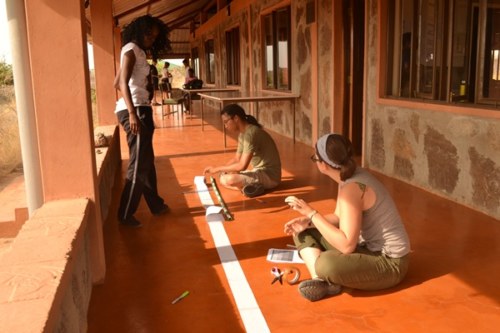
Gil, Ann and Rohan laying out their toilet sheet roll. Photo: Esther Kadaga
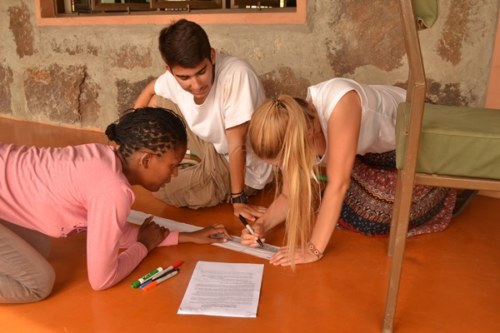
Ulla, Matt and Georgina working on their timeline. Photo: Esther Kadaga
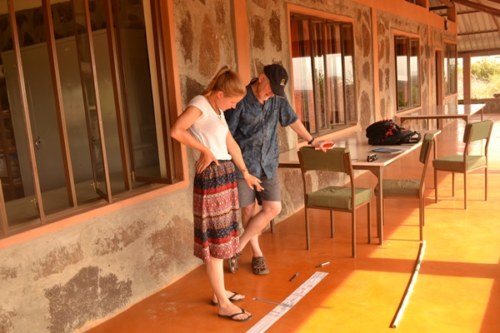
Ulla showing Prof. Sanders her group’s timeline. Photo: Esther Kadaga
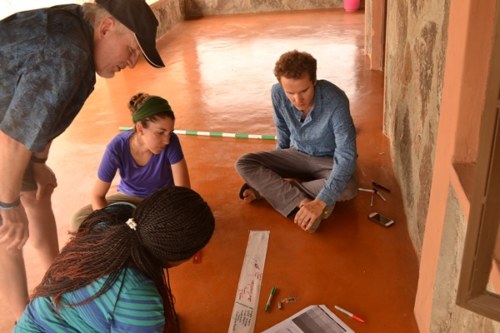
Prof. Sanders going over the geologic timeline with students. Photo: Esther Kadaga
Life forms have been evolving into lineages which can be reconstructed using fossil species. Human ancestry is one such example. Studying evolution involves analysing the changes in fossil bone morphology. The students reconstructed evolutionary lineages using Caminalcules, which are a fictional group of animals developed by Prof. Joseph H. Camin. Drawing from Paleontology, the students identified primitive and derived traits. The primitive traits are those that are held over from the ancestral condition. Derived traits are advancements from the primitive traits. For example, brain capacity within the hominin lineage has been increasing with time, this is a derived trait. Modern humans have a brain capacity of about 1300cc. Austrolopithecus afarensis living between 3.85-2.95 million years ago, and famously known as Lucy, had a brain capacity of about 400cc close to that of modern chimpanzees. Therefore, this is a primitive trait that Au. afarensis had still retained from the ape-human ancestor.
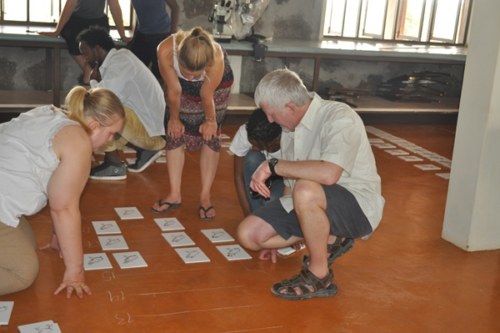
Prof. Sanders guiding students during the Caminalcules activity. Photo: Esther Kadaga
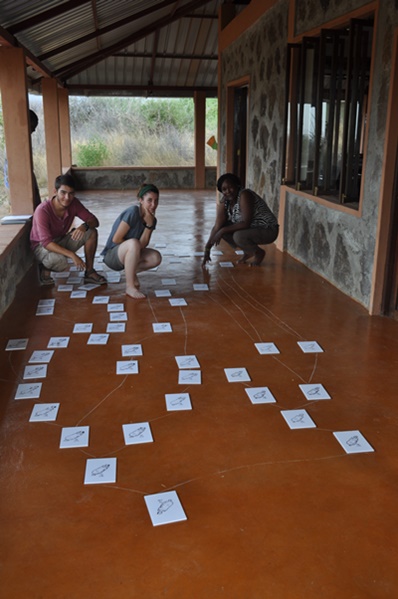
Matt, Lydia and Pauline’s Caminalcule evolutionary lineages. Photo: Rosie Bryson
The students also got to sieve and screen for fossil bone elements in an excavation site where Homo habilis fossil elements were recovered back in 2013. They put effort to find the elusive hominin elements. Screening and sieving are labour intensive and finding a fossil element and especially that of a hominin is a great reward in itself. The exceptional TBI fossil-hunter staff were very helpful in showing the students how to go about the two activities. Sadly, we did not get the hominin fossils, but the students got to appreciate the investment that comes with finding fossils.
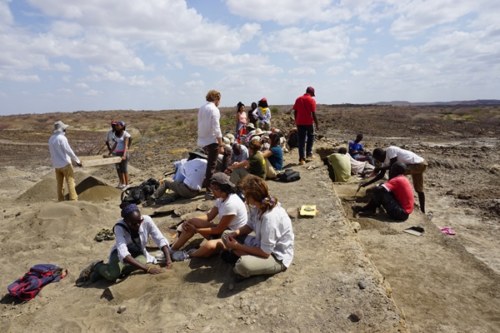
Excavation site. Photo: Rosie Bryson
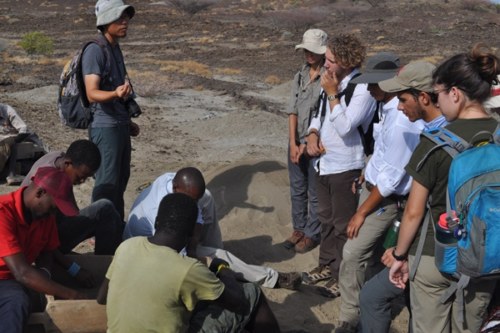
Deming explaining to the students what goes on in an excavation site. Photo: Esther Kadaga
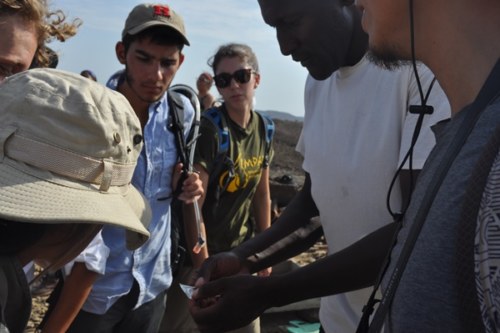
Nyete (Fossil hunter) showing the students a rodent fossil bone recovered from the site. Photo: Esther Kadaga
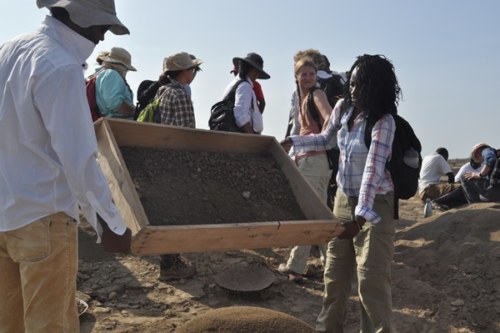
Kifle and Ann sieving. Photo: Esther Kadaga
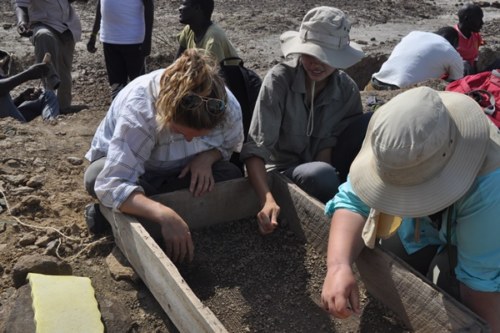
Screening for fossils. Photo: Esther Kadaga
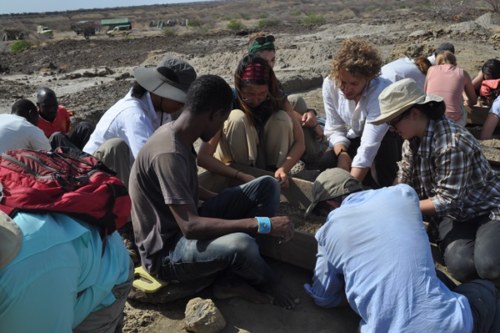
Students participating in screening. photo: Esther Kadaga
Birthday!!
And finally, we celebrated Regina’s birthday with a scrumptious veggie cake!
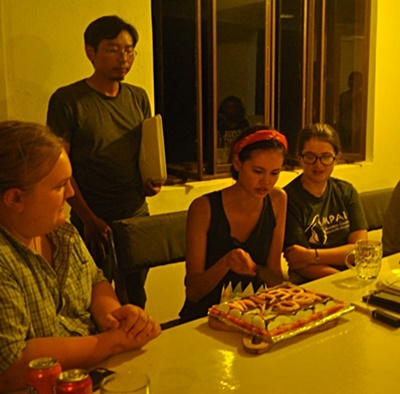
Birthday cake for Regina! Photo: Esther Kadaga





